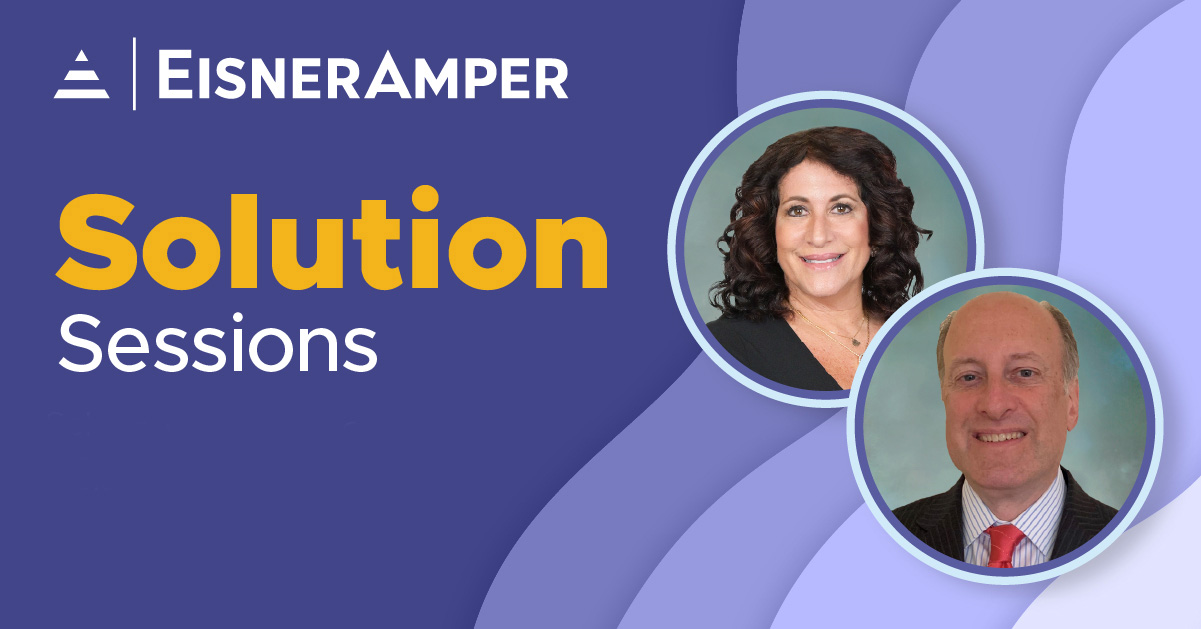
How Entrepreneurs Can Create Secure, Sustainable Companies
- Published
- Nov 24, 2020
- Share
Entrepreneus are the architects of businesses, building solid foundations for the success of their organizations. Their skill sets are rooted in the ability to see what is possible, drive forward, solve problems, put out fires, and push toward their goals. We like to say that they are great at working in the business and not necessarily on the business. Entrepreneurs have several common traits that often allow them to be successful and collect followers within the organization. These are the common traits found in entrepreneurial business owners:
- Have passion and charisma
- Are achievement-oriented
- Take responsibility for decisions
- Dislike repetitive, routine work
- Are creative and imaginative
- Possess high levels of energy and great perseverance
- Take calculated risks
- Are more reactive than proactive
Entrepreneurs with these traits are constantly running full-steam ahead, generating success for the business and demonstrating what is possible. However, with all of this attention on growing the bottom-line, dedicating time and energy to talent management may slide, creating some unintended organizational consequences:
Unequal or inequitable compensation – There is no real process or protocol for determining compensation. Decisions are often made emotionally or with little thought to long-term impacts.
Spending may happen as needed – There is little planning for future investments or resource management. We rarely see a solid capital expenditure plan in place.
Asynchronous conversations – Founders often believe others should understand their shared their goals and vision. However, this is not always the case. The communication may be sparse, incomplete, too infrequent or just unclear. This may leave others in the dark about the reason for key decisions or why the company is moving in a certain direction.
Not enough clarity for roles/feedback – If it’s not broke don’t fix it. Professional development is a valuable tool for employees, yet is often ignored in entrepreneurial businesses. A key theme that often emerges in entrepreneurial companies is that leaders say that their people are important, but there is little investment in that relationship.
We know why and how these happen, and it may work well for five, 10, or 20 years, but just when you need the company to be stable and sustainable, cracks may begin to show. Identifying a few specific, high-leverage activities could provide the structure, direction and cohesion needed to build a secure business that is better able to realize its various options and opportunities.
Compensation and reward systems need to be part of a well-organized methodology for attracting and retaining talent. Consider working with a compensation professional to ensure that your team members are compensated for the value they bring to the organization and that compensation levels are in line with market rates. Remember the following guidelines as you assess your current compensation practices:
- Compensate for the role, not the person or your personal relationship.
- Be clear about your expectations of performance.
- Make sure there is a clear link between behaviors and performance and the bottom-line impacts for the business.
- Contributing to the organizational culture is also an important, value-added activity. As such, define your desired culture and identify the core competencies and behaviors that will support that culture.
When it comes to investing in the company, entrepreneurs must take a long-term view. Many owners tend to stop reinvesting in the business as they age and at just the time when they need to ensure that the company is strong and competitive. Only then can we ensure that the owners will have multiple options for the future when they need to decide what to do with their business. Ask the following:
- What investments will you need to make to ensure you remain competitive?
- How effective is your technology?
- Does your technology (e.g., ERP system) have the capacity and capability to support your long-term growth?
- What upgrades are competitors making? How can you stay ahead of them?
- How can you better leverage your current technology infrastructure?
- Can professional advisors better guide your decision-making regarding future investments?
Communication with your people is key to building a strong and engaged workforce. While you may be gifted in your ability to envision the future and create goals to get there, if others don’t understand or share that vision and those goals, you’ll be the only one rowing in the right direction. Consider adding a few of these techniques to your leadership toolbox:
- Develop and share a strategic roadmap.
- Enlist senior leaders to develop a company-wide communication plan for sharing the vision, goals and strategies.
- Provide progress updates regularly.
- Link the strategic goals to departmental and individual goals.
- Find new ways to engage employees, such as through lunch-and-learn discussions, internal newsletters, company meetings, and team gatherings.
- Keep your vision alive by involving others.
- Establish times to communicate without disrupting traditional, informal communication or making people feel left out or surprised. Feedback starts at the top. Model the behavior to enhance performance.
Finally, your people need to know how they are doing. To help team members feel engaged and valued, they need to understand what constitutes excellent performance and then have the opportunity to talk about their own performance measures, standards and potential barriers to success. To develop a more engaged workforce, consider the following:
- A job description is not enough information to help employees understand what is expected of them. An expanded description should include details on desired impacts and outcomes.
- Ensure you have identified the important behaviors that support your desired organizational culture, and share this with your team. Recognize, reinforce and reward behaviors that nurture a healthy culture.
- Work with each individual to create a ‘path of progression.’ This is a career development plan that helps employees understand the potential for their personal and professional growth in the company, along with the steps they can take to realize that opportunity.
By following a few of these key steps, entrepreneurial leaders can capture the best of what they bring to their organization, while still preparing for a strong, successful and sustainable company for the future.
OUR CURRENT ISSUE OF RISE (Real Ideas to Stimulate Engagement)
Contact EisnerAmper
If you have any questions, we'd like to hear from you.









